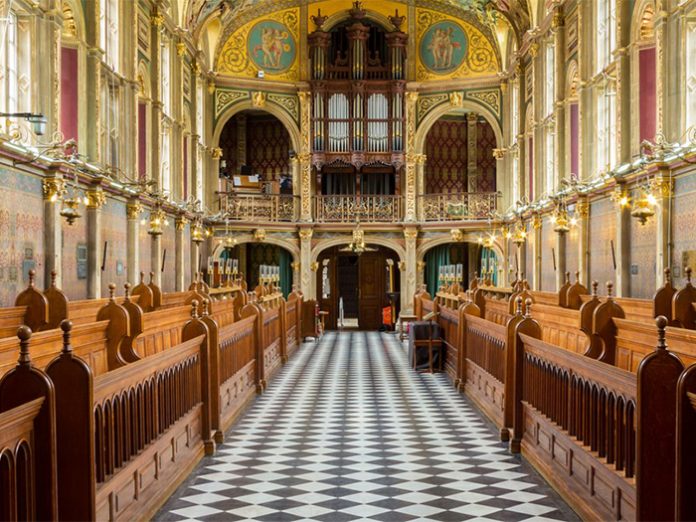With gilded walls, bas-reliefs and a fine manual organ, the chapel at London’s Royal Holloway College is widely celebrated as one of the world’s most beautiful university buildings. Now UK-based Whitwam AV Integration has installed K-array to ensure the chapel sounds as impressive as it looks.
“It’s all plaster, tiled floors and gilding – there actually isn’t a lot inside the chapel that is absorbent, aside from the people,” said Whitwam AV Integration’s David Harding. He added: “then we started looking around to consider what might work aesthetically. Royal Holloway College chapel is beautiful, so a large, standard column speaker certainly wouldn’t be visually acceptable.”
Whitwam is known for applying its blend of expertise and sensitivity to many of the UK’s most prized church buildings, from St Georges chapel at Windsor Castle, to St Margret Church in Westminster Abbey and Edinburgh’s St Giles Cathedral. Yet every project is unique, and this wasn’t the first time that loudspeakers had been added to the Royal Holloway College chapel interior. The previous system had loudspeakers positioned at a fairly high level, firing down and across the chapel with a conical response that meant a lot of the coverage disappeared out towards the windows up on that high level.
“So our first decision was to put in a form of line source column, meaning the vertical dispersion would be reduced without the loss of effective horizontal dispersion. We knew that would also mean we could locate the speakers much nearer to the listeners, thereby reducing the effects of the building,” elaborated David.
The chapel is now served by a K-array solution comprising 12 Vyper KV50 line array elements, positioned at regular intervals, at head height along the pews. Four Rumble KU44 subwoofers have been fitted beneath the chapel’s rear pews, providing precise low-end support. Power for the system is courtesy of two Kommander-KA24 power amplifiers.
Crucially, the chapel’s listed building status meant that Whitwam was unable to attach any equipment to the walls. “But there is a wooden radiator grille that is no longer used by the chapel, and which runs between each of the pillars. So we designed a flat plate which sat over the grille, with a second plate beneath the grille and bolts going between the two. It means the timber of the grille is sandwiched between the plates and then the metal rod upon which the Vyper KV50 is mounted rises from the plates, with the cable running internally.”





